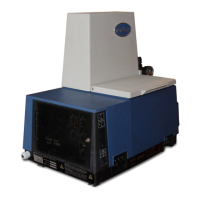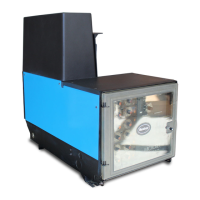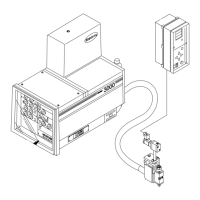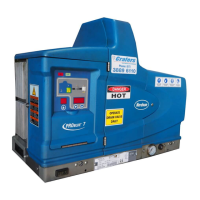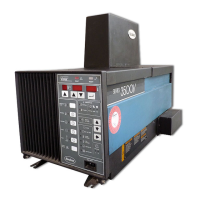2-6
Equipment Familiarization
Automatic extrusion guns
(HZ0 and HZOO)
Two of Nordson’s automatic guns, the H20, and the H200, have been
equipped with RTD’s for use with Series 2300SP applicators. The H20
gun is available as a single module gun, either with or without a
micro-adjuster. The H200 gun is available in 1, 2,4, and 8 module units
and in three configurations: one with close center-to-center distances
(close), one with wider center-to-center distances (expanded), and one
designed for use on case sealers with short compression sections (low
profile). All of the automatic guns are equipped with a quick-disconnect
electrical plug, and all may be mounted either vertically or horizontally.
The automatic guns consist of two major parts: a service block and a
firing mechanism, both made of aluminum. The firing mechanism for
the H20 and H200 guns is a rectangular-shaped “module” which bolts
onto the face of the service block. It consists of an air cylinder, an air
piston with a needle and ball attached, a seat, and a nozzle. It can be
repaired in the field. Standard, multiple-orifice, and right-angle nozzles
can be used with all of the automatic guns.
The service block contains one or two cartridge heaters, an RTD, and
the inlet connections for air and hot melt material.
During operation, hot melt material is supplied to the automatic gun(s)
by the pump in the applicator (see Figure 2.3). It enters the inlet port of
the service block and is directed through drilled passages in the block
to the extrusion module(s). When the gun solenoid valve is energized
by a signal from a sensing device (such as a microswitch or a
photosensor), compressed air enters the module by way of the service
block and forces the air piston upward, lifting the attached ball off its
seat. The pressurized hot melt fluid is extruded from the nozzle while
the ball is held off its seat by air pressure.
When the sensing device or timer deenergizes the solenoid valve, the
air under the air piston and in the service block vents to the atmosphere
and the piston-return spring forces the ball against its seat, stopping the
flow of hot melt material.
Each of the automatic guns offers certain advantages. The H200 gun
has an adjustment screw which enables the firing of one module to be
synchronized with another. The H20 may be ordered with a micro-
adjuster which enables bead thickness to be changed without changing
the hydraulic pressure of the system.
All of the automatic guns, with the exception of the H20 gun with the
microadjuster, are available in a 200 VAC version as well as in the
standard 230 VAC version.
P/N 106 701A
41-23OOSP - issued 1194
.
CD Nordson Corporation 1994
All Rights fleSeNed

